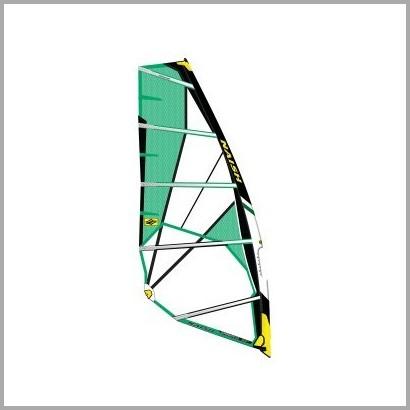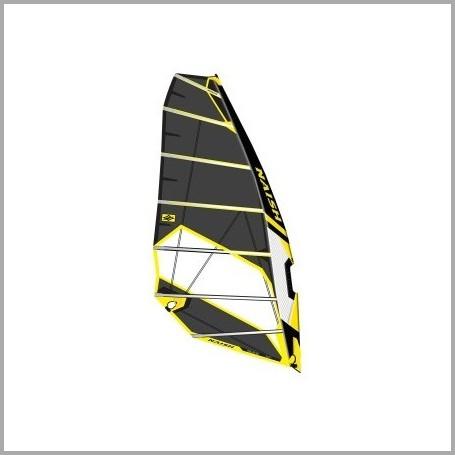
What are the different types of windsurf sails on the market
A sail in windsurfing is almost the same as a sail in yachting. Well, almost. You need it to catch the wind — and to move with it, but it looks different. There are five main windsurft sails types. Let's look closer at each of them in this article.
Windsurf beginner sails
Any windsurfing training begins with them. As a rule, their size is from 2 to 5 m² (for children, sails can be even smaller). They are made from synthetic textiles — because of this, these sails are quite light and can be used even with minimal wind.

Beginner sail
Freeride sails for windsurfing
Usually riders switch to such sails after the first few lessons or after a couple of weeks of sailing. The most common sail group among amateurs. They are designed for riding on smooth water or small wind waves. Freeride sails are stable and handle well even in gusts of wind. Such sails are made of polyester film.

Freeride sail
Windsurf slalom sails
Designed for racing and high speed on relatively smooth water. They usually use special inserts between the battens and the mast, which give the sail a more convex shape and thereby increase the traction force. Slalom sails are the largest of all windsurfing sails, reaching up to 13 m² in size, which novice riders can't handle.

Slalom sail
Freestyle sails for windsurfing
Designed to perform tricks. They are compact and small in size — rarely more than 6 m². They are less stable in strong winds and gusts than other types of sails, but they are lighter and more maneuverable. This helps the athlete to jump over the water and make turns. Also, such sails are most convenient to use for light wind freestyle on the shore.

Freestyle sail
Wave sails
Designed for the most difficult type — big wave windsurfing. These are the stiffest, strongest and heaviest sails — because when riding on the waves, such a sail (not to mention the rider himself) experiences the maximum load. Such sails, as a rule, have reinforced armor. And their size is average, from 3 to 6.5 m².

Wave sail
How to find weather forecast for windsurfing in Windy.app
1. Open the nearest spot from the Home screen:
2. Choose Windsurf weather profile by the icon right to the weather forecast models with a preset of ready-to-use weather parameters:
3. Get weather forecast:
Read mini guide to windsurfing with Windy.app for iOS.
Learn more about how to read the surf / swell forecast in a special Windy.app presentation with examples and tips from professional surfers with many years of experience of riding the biggest and best waves on the planet.
Text: Natalia Kirasheva
Cover photo: Brett-jordan / Unsplash
You will also find useful
How to make the most out of the Wind map
Big Сollection of Articles About Kitesurfing and Windsurfing in 2021
What are the different types of kitesurfing kites
Latest News
Professional Weather App
Get a detailed online 10 day weather forecast, live worldwide wind map and local weather reports from the most accurate weather models.
Compare spot conditions, ask locals in the app chat, discover meteo lessons, and share your experience in our Windy.app Community.
Be sure with Windy.app.



